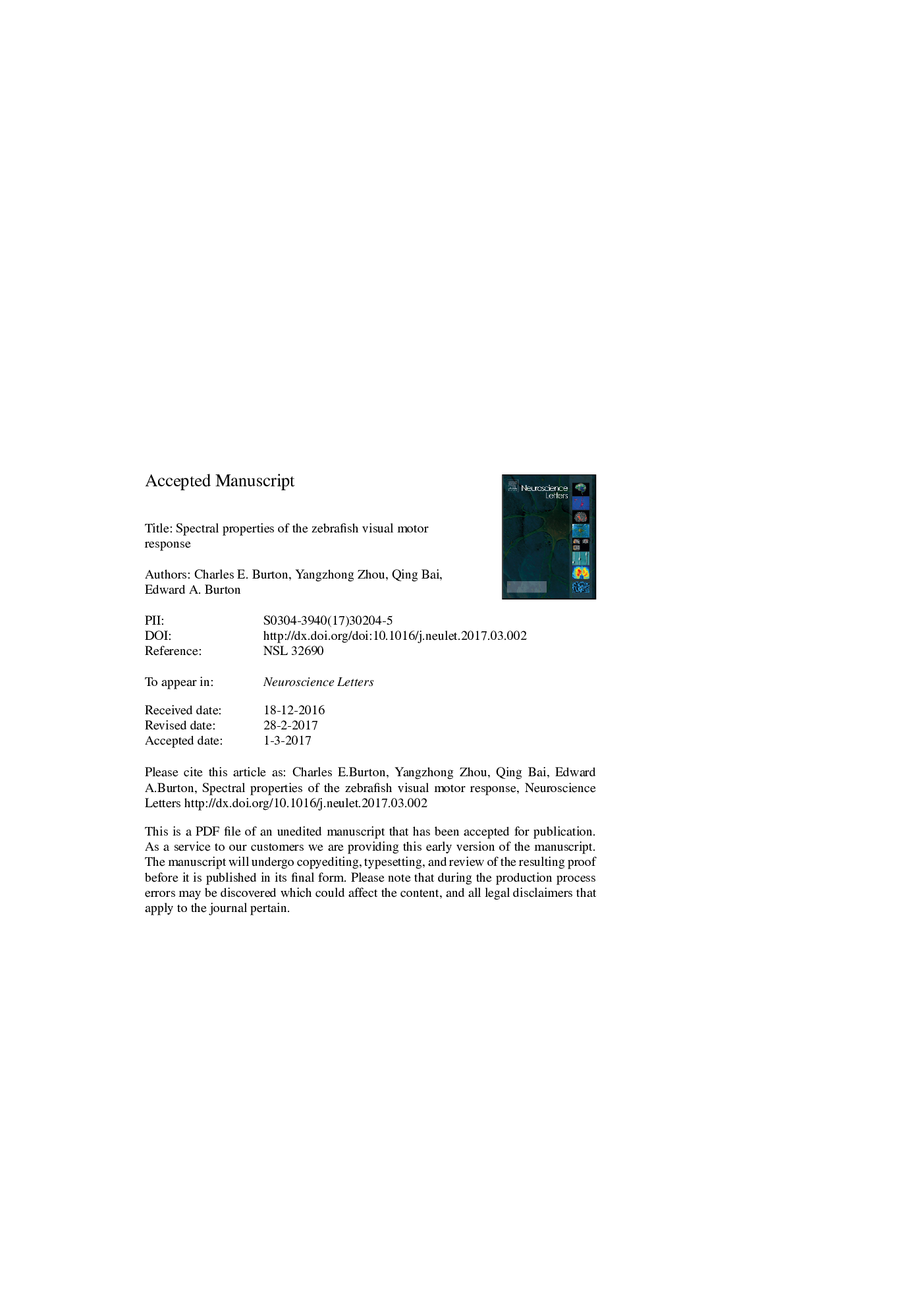| Article ID | Journal | Published Year | Pages | File Type |
|---|---|---|---|---|
| 5738703 | Neuroscience Letters | 2017 | 13 Pages |
Abstract
Larval zebrafish react to changes in ambient illumination with a series of stereotyped motor responses, called the visual motor response (VMR). The VMR has been used widely in zebrafish models to analyze how genetic or environmental manipulations alter neurological function. Prior studies elicited the VMR using white light. In order to elucidate the underlying afferent pathways and to identify light wavelengths that elicit the VMR without also activating optogenetic reagents, we employed calibrated narrow-waveband light sources to analyze the spectral properties of the response. Narrow light wavebands with peaks between 399Â nm and 632Â nm triggered the characteristic phases of the VMR, but there were quantitative differences between responses to different light wavelengths at the same irradiant flux density. The O-bend component of the VMR was elicited readily at dark onset following illumination in 399Â nm or 458Â nm light, but was less prominent at the transition from 632Â nm light to dark. Conversely, stable motor activity in light was observed at 458Â nm, 514Â nm, and 632Â nm, but not at 399Â nm. The differential effect of discrete light wavebands on components of the VMR suggests they are driven by distinct photoreceptor populations. Furthermore, these data enable the selection of light wavebands to drive the VMR in a separate channel to the activation of optogenetic reagents and photosensitizers.
Keywords
Related Topics
Life Sciences
Neuroscience
Neuroscience (General)
Authors
Charles E. Burton, Yangzhong Zhou, Qing Bai, Edward A. Burton,
